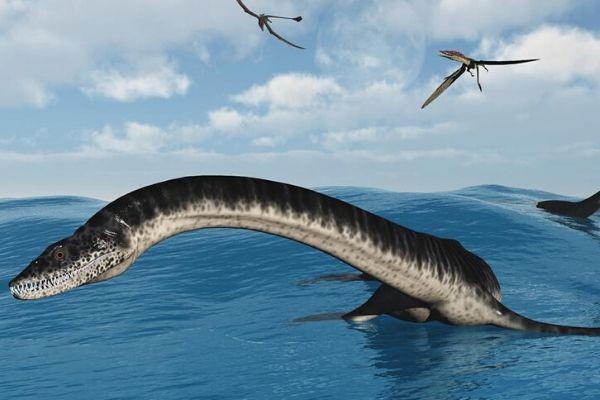
Investigating aquatic reptiles and their bones, dino detectives assumed they are specialized for aquatic life. They have two major types for one kind of aquatic reptile, that is not a dino!
Nothing can be more amazing to anyone than to learn about the bones of aquatic reptiles that existed in the last 65 million years. Yes, if the guess the animal is a dinosaur, then it means that someone likes dinosaurs a tad bit more. It is hard to speculate about how animals looked or functioned before, without bones. When they started dying out 65 MYA, they were buried immediately or died out slowly. What was left were their skeletons than fossilized as the earth went on.
One of the ways of seeking proof of these magnificent creatures is digging and seeking out places where their fossils are found. For each new discovery that allows remains in that were complete or incomplete, provide a clue to the puzzle. Identifying and finding members of any dinosaur family is a stepping stone to re-imagining a creature long dead.
The classical image of a palaeontologist is one guy digging and banging away at rock and sand. Or looking intently at rocks, trying to guess where a probable fossil might be found. Despite the glamorization of Dr Grant in Jurassic Park, that is not the reality. Real palaeontologists are more prospectors or bone hunters, looking for a big score or dinosaur bones.
Of course, palaeontologists are now using advanced tools at their disposal, not just hammer and chisels. New technologies like a CT scan and laser scanner give a more accurate picture of any fossil. Before this, old bones were ocular, and they had to draw the specimens. New tools mean a new insight on how to investigate any specimen, as palaeontologists tried to be more accurate.
One good example is an investigation into the lives of plesiosaurs that lived in the seas during the time of the dinosaurs. Essentially aquatic reptiles are not dinosaurs, but another family of reptiles that evolved separately from theropods and sauropods. Just because it looks like a reptile, it should be a dino, but it does not work that way. These marine reptiles were descended from one ancestor who took to the water to avoid competition from others. Till they evolved into what they became and produced several types of marine reptiles.
Two families grew out from one ancestor, two groups were the pliosaurs (short neck) and the elasmosaurs (long necks). These two types did not produce any descendants, they are one of the most unique aquatic animals in any time period in the earth's history. All these assumptions were worked out by paleontologists as they found bone fragments and began to piece these bones themselves.
As these bones are studied by scientists, they decipher to analyze what the bones were telling them. Best guesses were that plesiosaurs lived near the shores, and moved to deeper water with specialized evolution. Another clue was small canals for their veins, to supply blood flow. Dino detectives deduced that plesios needed to come up after every dive. These aquatic dinos became big to hold more blood for longer deep diving.
Palaeontologists were able to guess this with all these tools at their disposal. And they notice it, in modern-day aquatic animals as well. Most plesiosaurs were guessed by dino detective to have large blood vessels, that made them immune to the bends. All the assumptions about their bones made this aquatic reptile specialized and evolved for living in the sea.
Related Article: Geology | A study of bones in aquatic reptiles shows some made for diving














